NSYSU Forms Alliance with Six Major Hospitals in Southern Taiwan for Cultivating Medical Talents
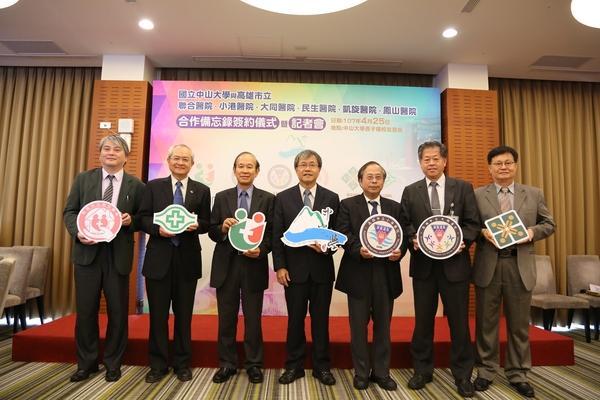
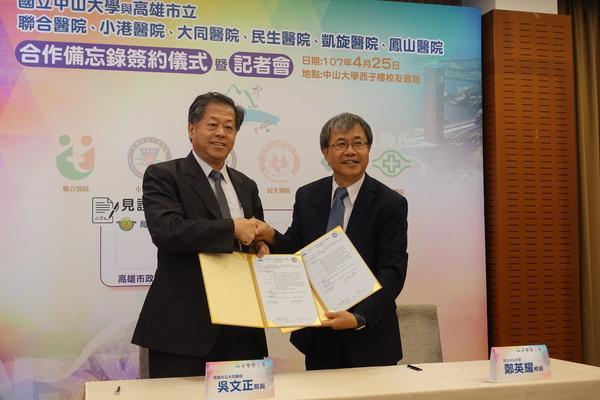
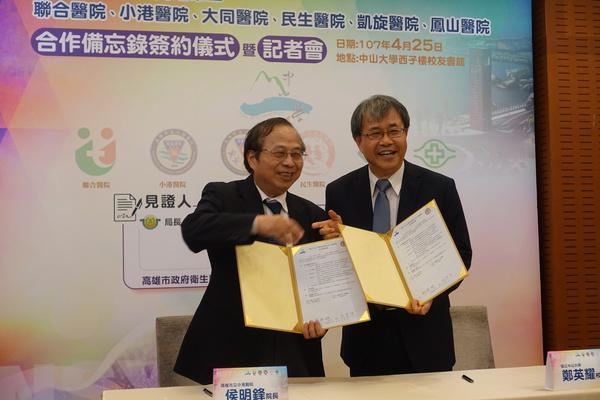
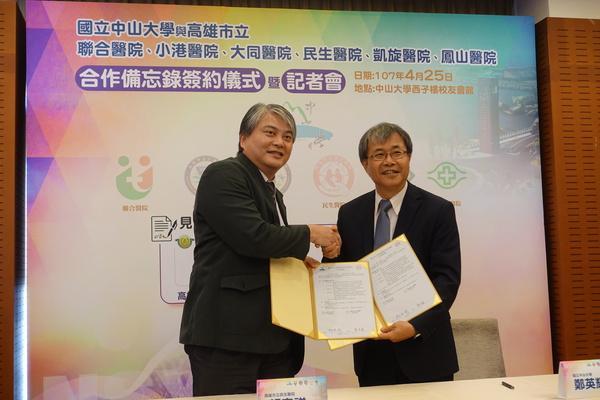
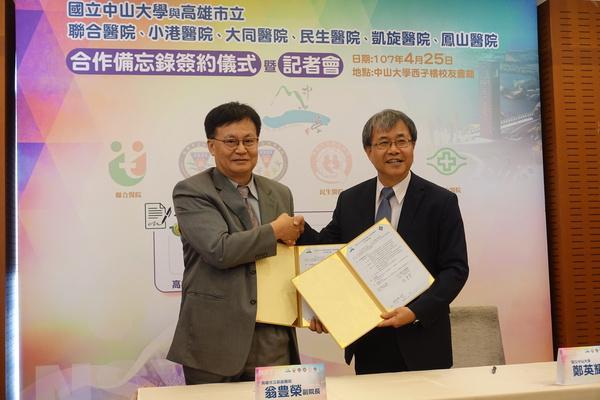
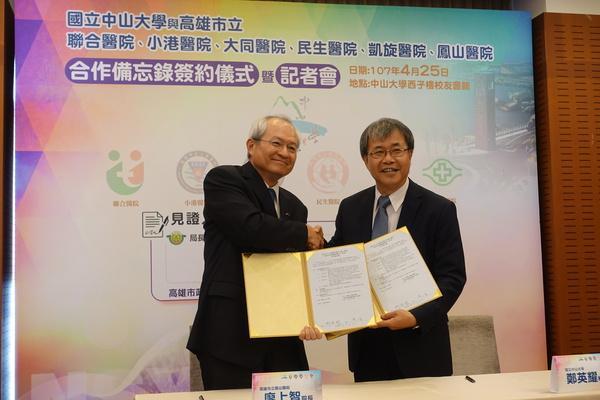
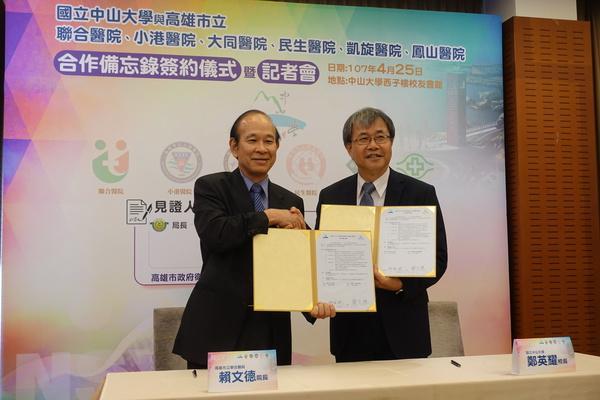
National Sun Yat-sen University (NSYSU) recently signed a memorandum of understanding (MOU) with Kaohsiung Municipal United Hospital, Kaohsiung Municipal Min-Sheng Hospital, Kaohsiung Municipal Ta-Tung Hospital, Kaohsiung Municipal Siaogang Hospital, Kaohsiung Municipal Kai-Syuan Psychiatric Hospital, and Kaohsiung Municipal Fengshan Hospital. With this MOU, NSYSU and the municipal hospitals declared that they will jointly conduct academic research and industry–academia cooperation to cultivate medical talent. Ying-Yao Cheng, the president of NSYSU, emphasized that the MOU represents the largest collaboration between the academic community and the health care and medicine community in Southern Taiwan. He also added that by utilizing the educational and research systems of NSYSU, top medical professionals can be trained and medical research and development (R&D) can be advanced, thus filling the gap between academic knowledge and clinical practices. Eventually, Taiwanese citizens can receive health care services of greater quality.
The signing ceremony today was witnessed by Joh-Jong Huang, Director-General of Department of Health, Kaohsiung City Government, Ching-Kuan Liu, President of Kahosiung Medical University, and Shaw-Yeu Jeng, Vice Superintendent of Kaohsiung Veterans General Hospital. President Cheng indicated that although NSYSU does not have a medical school, the university has continually cooperated with Kaohsiung Medical University, Kaohsiung Veterans General Hospital, and Kaohsiung Chang Gung Memorial Hospital. Now, the alliance has expanded by welcoming six more hospitals. “These nine [aforementioned] hospitals, so to speak, are NSYSU’s medical schools!” Cheng stated. The president continued by saying that as the largest collaboration in Southern Taiwan, this six-hospital program exhibits NSYSU’s determination and sense of mission to develop medical talent and fulfill social responsibility by integrating regional resources. Cheng also hoped that such collaboration could expand to Pingtung and Penghu.
NSYSU is known for its remarkable R&D in biological medicine and has received recognition from medical technology sectors at home and abroad. For example, the university studied marine natural products to develop new pharmaceutical drugs; developed a cutting-edge mass spectrometry technology that can detect toxins in three seconds and is suitable for use in hospital emergency and laboratory departments; used hot-spot analysis to explore the risk outdoor air quality exerts on human health; applied highly fluorescent semiconducting polymer dots in forensic science; and conducted medical research on the necrosis mechanism of oral cancer cells, optical inspection of esophageal cancer, targeted therapies for stomach cancer, bacterial flora related to periodontitis, and translational medicine on liver cancer.
The signing ceremony today was witnessed by Joh-Jong Huang, Director-General of Department of Health, Kaohsiung City Government, Ching-Kuan Liu, President of Kahosiung Medical University, and Shaw-Yeu Jeng, Vice Superintendent of Kaohsiung Veterans General Hospital. President Cheng indicated that although NSYSU does not have a medical school, the university has continually cooperated with Kaohsiung Medical University, Kaohsiung Veterans General Hospital, and Kaohsiung Chang Gung Memorial Hospital. Now, the alliance has expanded by welcoming six more hospitals. “These nine [aforementioned] hospitals, so to speak, are NSYSU’s medical schools!” Cheng stated. The president continued by saying that as the largest collaboration in Southern Taiwan, this six-hospital program exhibits NSYSU’s determination and sense of mission to develop medical talent and fulfill social responsibility by integrating regional resources. Cheng also hoped that such collaboration could expand to Pingtung and Penghu.
NSYSU is known for its remarkable R&D in biological medicine and has received recognition from medical technology sectors at home and abroad. For example, the university studied marine natural products to develop new pharmaceutical drugs; developed a cutting-edge mass spectrometry technology that can detect toxins in three seconds and is suitable for use in hospital emergency and laboratory departments; used hot-spot analysis to explore the risk outdoor air quality exerts on human health; applied highly fluorescent semiconducting polymer dots in forensic science; and conducted medical research on the necrosis mechanism of oral cancer cells, optical inspection of esophageal cancer, targeted therapies for stomach cancer, bacterial flora related to periodontitis, and translational medicine on liver cancer.
Click Num:
Share
